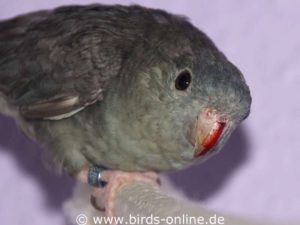First aid

Are you one of those people who try to suppress any thought of a very sudden illness or an accident of their bird and its consequences, because it’s so unpleasant? This is not a good idea. Because whoever bears the responsibility for pet birds must always reckon with the possibility of an accident or severe illness. Such an incident could be so serious that it might put your bird’s life at risk. Therefore you should be well prepared.
Only those animal keepers who have dealt extensively with the topic in advance can provide life-saving first aid for the bird in an emergency. Therefore, you should take a little time and overcome yourself to gather information about the typical therapeutic measures that may be urgently needed after an accident or in case of illness. In many cases, a visit to the vet is only possible if you have treated the bird yourself at first and stabilized your feathered patient for transport.
To be able to provide targeted aid, it is very important to have a well-equipped medicine chest at hand. This should enable you to help your animal in an emergency. One of the most common first aid measures is to stop bleeding, which is described in a separate article. You should also read how to proceed in case of an injured blood feather. And you should know what to do if your bird has suffered a head injury. Please read more about this in the article about concussions. (All mentioned chapters soon to come!)
If possible, try to have your avian vet explain and show you typical first aid measures. Some animal welfare organizations or similar institutions offer first-aid classes for bird owners. To participate in it is a very good idea.
What else is important in an emergency?

Serious illnesses or accidents almost always occur at the worst possible time. It is usually difficult to reach an avian vet then – for example on a holiday or Sunday. It is therefore advisable to write down the contact information of animal clinics with (night-time) emergency services that are located near you. But in general, you should always have the address, opening hours, and phone number of an avian vet at hand so that you don’t have to waste time searching in an emergency. And don’t forget to enter the addresses of the bird doctor and the animal hospitals into your navigation system.
Those who do not own a car should talk to friends or family to find helpers who could provide emergency transport at very short notice. This is not always possible, so sometimes you have to rely on a cab for transportation. Unfortunately, not all drivers are willing to transport sick animals or birds. Therefore it is useful to ask cab companies in advance and note the numbers of animal-friendly operators.
To be able to act quickly in an emergency, you should have a clean transport box at hand. This allows you to accommodate an injured or seriously ill bird without delay and then take it to the doctor.
Read all about it
The author Julie Rach Mancini published a book titled “First Aid For Birds: An Owner’s Guide to a Happy Healthy Pet” that is available in book stores and via the internet. This book will help you to administer first aid.
